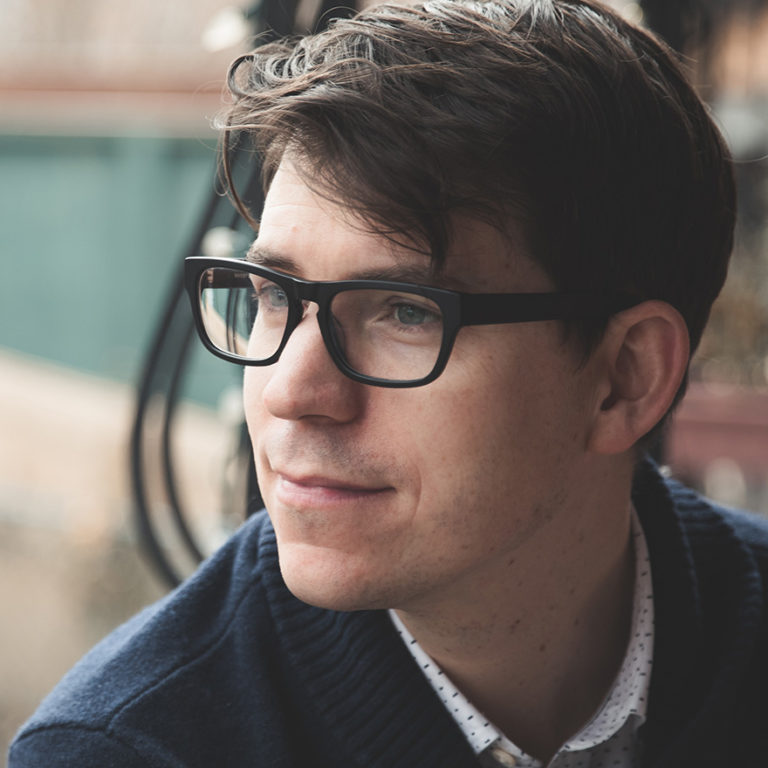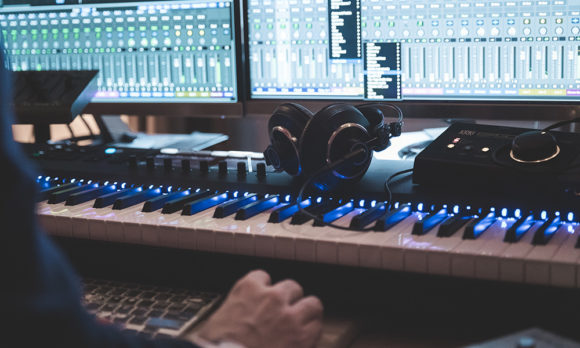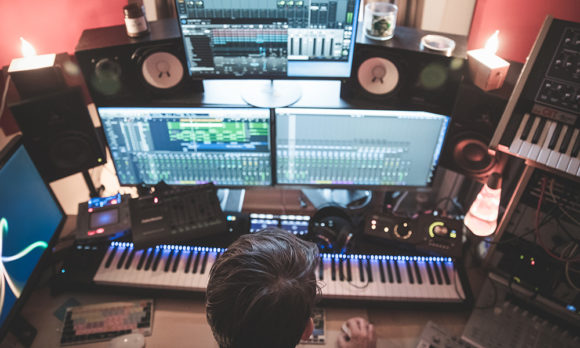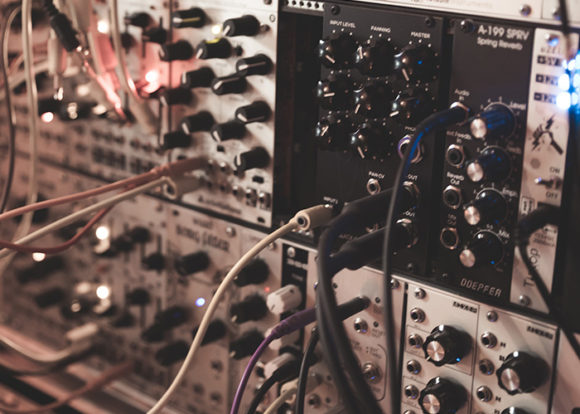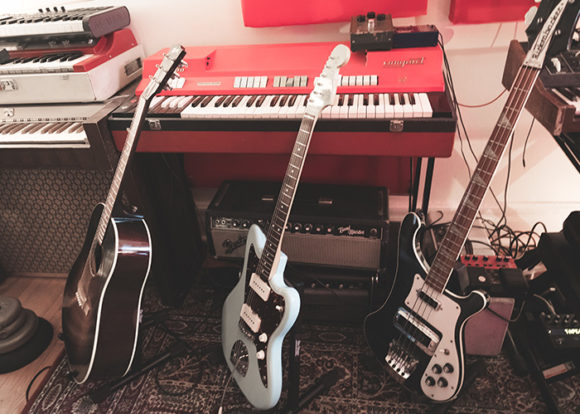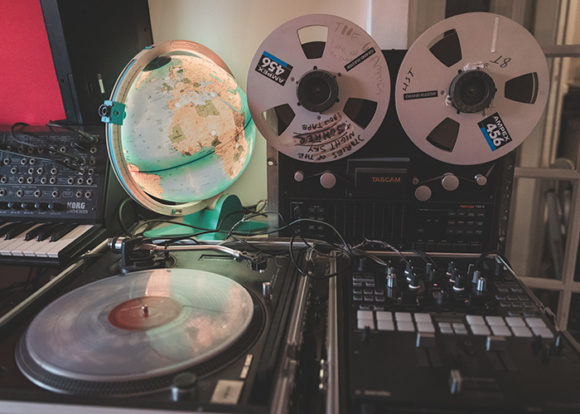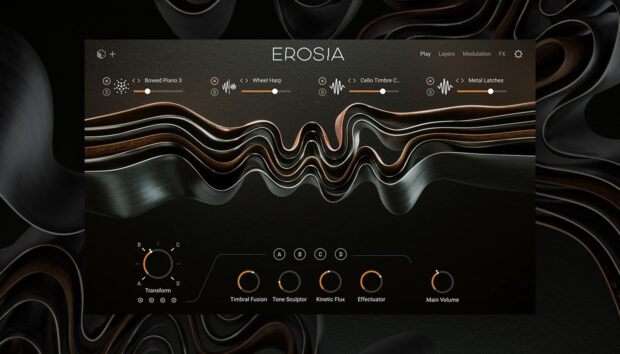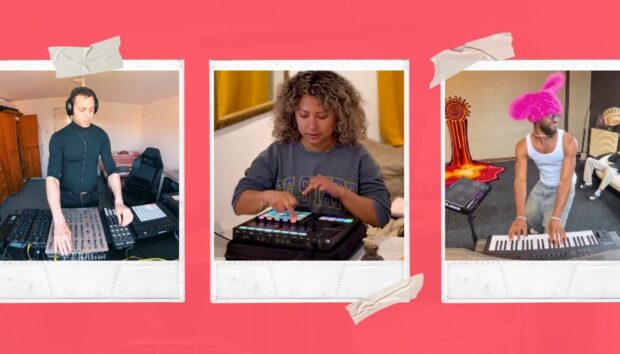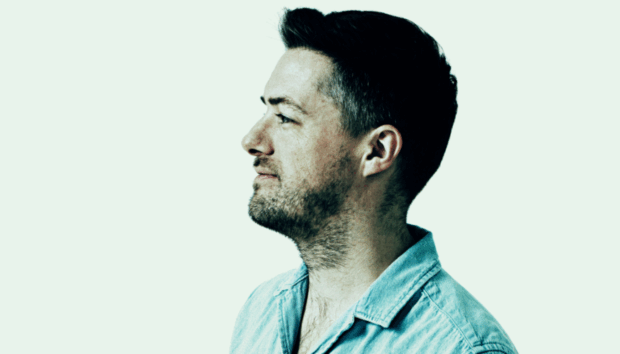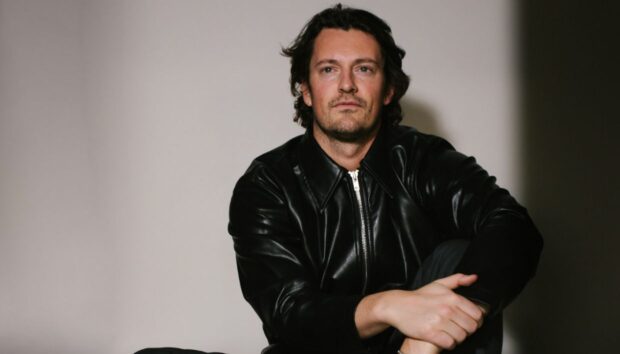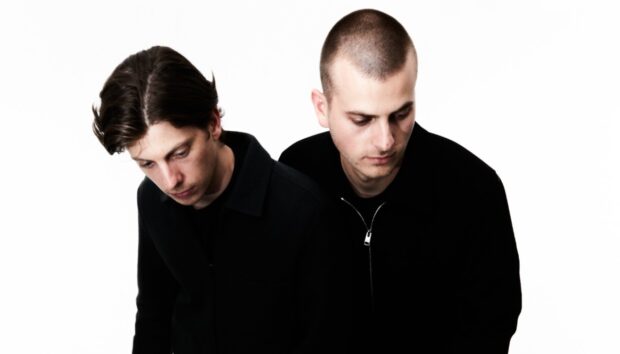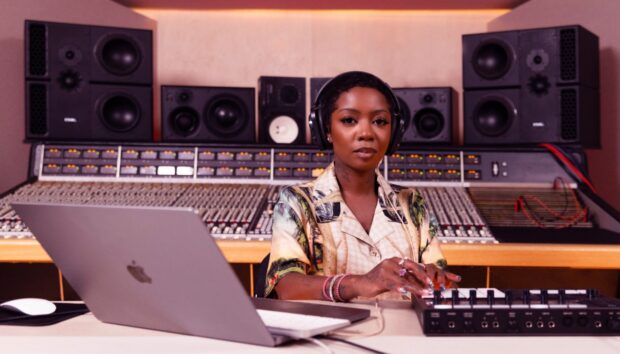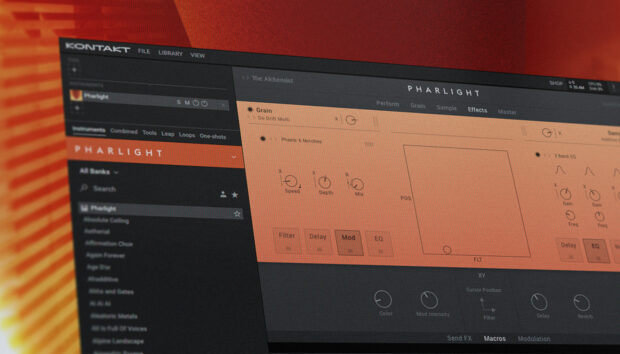Peter Chapman has worn many hats in the music world: established beat-battler, viral remix artist and award winning scorer for TV (Workin’ Moms, Wynonna Earp), and video games (Guacamelee! 1 & 2, LittleBigPlanet Karting). Working from his downtown Toronto studio, Chapman has all of his tools available at the touch of a button to increase speed and productivity. Native Instruments sat down with the versatile producer to learn about his industry transitions, and to find out why workflow is the most important thing to him.
How did you get your start in making music?
I’ve been playing music since I was a kid. I grew up doing the piano and guitar lessons thing in high school. The real turning point for me was getting a cassette four-track for my 17th birthday and my friend giving me a copy of Impulse Tracker, which was an old DOS-based sampler. That completely changed my approach to making music as it was the first time I could sample, sequence and multi-track. I spent all my free time in high school and university playing with those.
What was the first thing you created musically?
It was bad. I called it the Lolo Project. I was a huge fan of early Ween, Beck and Devo, so I wrote a lot of very weird music heavily influenced by them. I was really proud of it at the time but listening back to it, it was pretty unlistenable. I eventually learned to loop samples, at which point the music became mildly more tolerable. I made cassette tapes and hid them in public bathrooms for people to find. I was a weird kid.
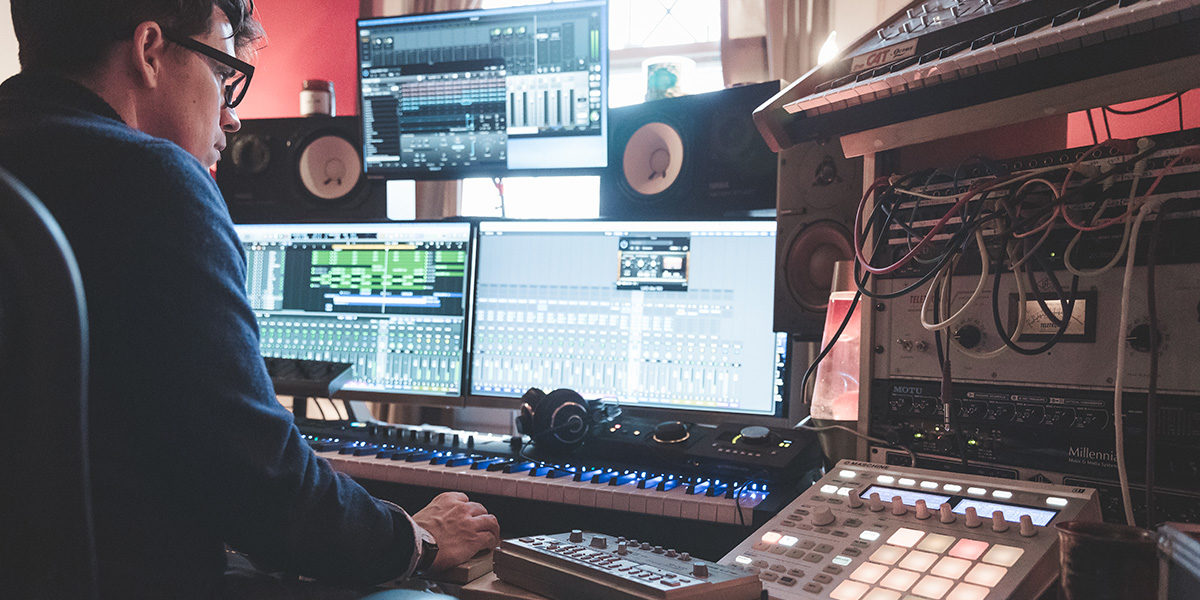
What was the catalyst to enter the beat battle scene?
All throughout my 20s I was really into producing hip hop and electronic stuff. I was a big MPC head and got the 2000XL. I was using Logic, but I was way more interested in pushing the MPC to its limits. I was really into RJD2, Cut Chemist and DJ Shadow as they were some of the first guys doing live MPC performance stuff. When I started performing live I was bouncing between the 2000XL, a Yamaha SU700 (which is the best and worst hardware sampler ever made) and my turntable/mixer with a stack vinyl. Around that time, I met producer/performer Fresh Kils and we became good pals as we were both doing the live MPC pad-mashing thing. He had entered into one of the first live beat battles in Toronto called Sound Battle Royale, and easily made the finals, so he encouraged me to enter. I did and beat out the other 30 producers, including Fresh Kils, to win the title. He was pretty mad. The following year he came back guns-absolutely-blazing and kicked my ass, taking the title. We’re still good pals.
During 2014 you also made an edit album of Beastie Boys lyrics with Daft Punk samples that went viral in 2016 after being picked up by outlets ranging from Esquire to Gizmodo. What was the biggest thing you learned from this experience?
Even if it doesn’t get any traction, just keep making awesome music and keep putting it out there. I’ve had so many career changing serendipitous events resulting from doing this. Everything from Daft Science blowing up years later, to an advertising house hearing my weird music in a brunch restaurant, to an agency finding a track I put up on Bandcamp and licensing it to a Rimmel UK commercial. It’s that whole “the harder I work, the luckier I get” thing.
You started out in beat-battles and remixing, but how did your career move into making music for TV and video games?
When I was doing the live MPC/turntablist stuff I was also writing music for commercials. I had always known I wanted to get into film and TV, mostly because I could see what was happening to the music industry and I knew I had to find a way to make a career in music commercially viable, as it’s literally the only thing I’m good at. It’s hard to make a living off selling records and live shows, so I knew that from when I was about 20, that this was what I wanted to do. I started writing music for commercials and that led to television and now it’s a whole multimedia thing. I don’t limit myself to just TV or video games. I’ll take on just about anything.
What advice would you give to artists wanting to move into this area of production who are coming from the beat community.
The first thing I had to get comfortable was getting out of the 4/4 looped-beat mindset, as well as doing away with unlicensed samples. That stuff is great, but scoring to picture usually means a lot of changing, weird time signatures, and tempo fluctuations. Secondly getting busted for an uncleared sample is a career ender. Unless you’re Dan the Automator, music supervisors generally don’t want to deal with tracking down the rights to that stuff. Lastly, if you’re just starting out, you’re going to need more in your toolbox than good beats if you want to make a living at scoring to picture. I’ve never stopped schooling myself in theory, orchestration and scoring. Scoring to picture is just as much about film making as it is about music making, and recognizing what a film needs rather than what you think sounds cool is a skill in itself. There are lots and lots of books on this stuff. Go read them!
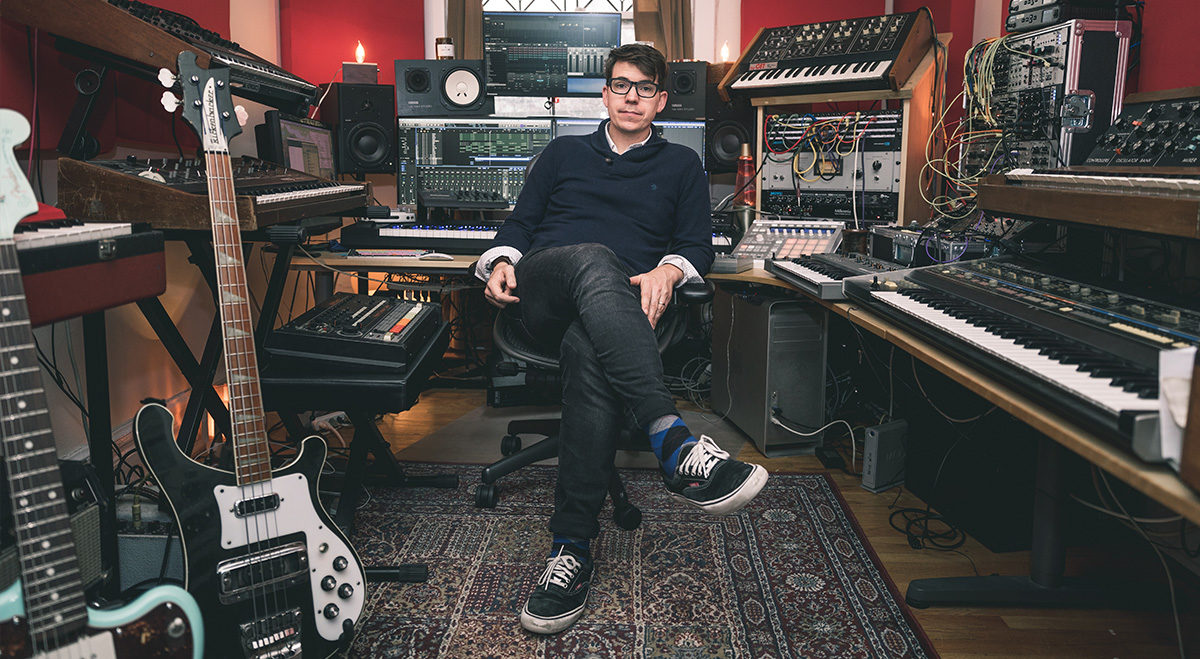
Your studio is full of some amazing gear and all really accessible from your workstation. Did you sit down and lay it out with the wiring, or was it put together as you went along?
It always starts with me thoughtfully laying everything out, but as time goes on and you add more gear, you start running out of room, cables and inputs. Every five years I unplug everything and rewire the whole thing to suit whatever habits and workflows I’ve been developing.
When laying it out what was the key problem you were trying to solve?
In recent years I’ve become really obsessed with workflow. So I’m always putting thought into how to make everything move faster and more efficiently. Hardware synths can be a major time suck, so I wired all of them up so I can control them directly from Logic, and they all come in on their own tracks as if they were plug-ins. I’ve also resolved to design whatever patch they’re going to have at the beginning of a project, and just leave them, sort of Chris Lord-Alge style. I treat each one of them as a preset that will only exist for that season of a show. Any real instruments need to have their own station with a live mic, so I’m not wasting time setting up mics and getting levels.
Similarly, I’ll set this all up before a project. Lastly, I’ve had to make a rule not to touch the modular synth while I’m on a show, because I’ll literally lose days over the course of a season. I’ll make lots and lots of patches and loops with it before a show starts, and turn them into Kontakt and Battery instruments so I can pull up crazy cool custom sounds in a pinch, but when I’m on a show, that thing stays TURNED OFF! It’s sad but true.
You recently upgraded to the new KOMPLETE KONTROL S88. How does this fit into your setup?
I went through a bunch of MIDI controllers over the last decade and I’d always chew through them in a couple of years and they’d break. When I got the first gen S88 it felt incredible and the response was such that I’d pull up piano soft synths that I didn’t particularly like and discover they sounded amazing! I could suddenly get so much beautiful nuance. It sounds weird, but having a controller with great touch response can bring a sample library to life. It would seem that one’s libraries are only as good as their controller. The other thing that I love about it, going back to my workflow, is that I make a lot of my own custom Kontakt and Battery libraries specific to shows or projects I’m working on, and being able to color code the sounds within the patch, and have the S88 display those colors on the keys makes finding sounds so quick. For example, on Workin’ Moms I work with a brilliant artist named Maylee Todd and we have banks and banks of vocal samples that we made. They’re all color coded, so all the breathy sounds are yellow and all the ‘heys’ are red, so it takes way less time when looking for the sounds I want. Similarly, when I worked on Wynonna Earp I made these really menacing and demented brass blasts on my modular that sounded really awesome. I put this into Kontakt so I can use it repeatedly as that sound then becomes the sound of the main villain in season 3. Also, the way articulations in NKS-ready Kontakt instruments will light up under the left hand saves me a ton of time. Gone are the days of hunting and pecking for your articulations, and realizing you’re transposed to a weird octave.
What is the deciding factor when adding a new piece to the set up?
I tell myself my days of gear fetishizing are over, and I try to abide to the philosophy that the gear has to either save me time, inspire me, or improve the quality of my work. Bonus points if it doesn’t take up any space. These days that usually means I’m more interested in computers, hard drives, and software. Directors don’t care if you’re using a legit vintage Minimoog, but they do care if your brass samples sound like ass. So that’s where I tend to focus when making upgrades.








